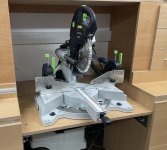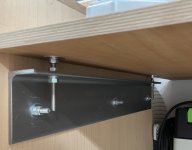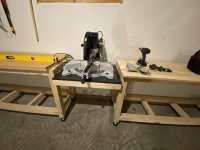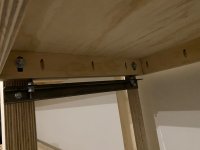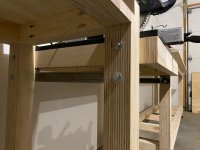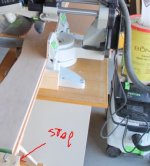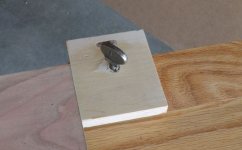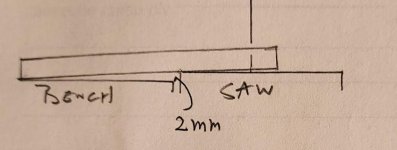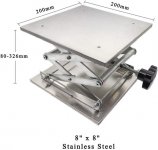Hi all,
Does anyone have advice on how to attach the Kapex to a miter station to allow for micro-adjustability? I was orignally planning on having the saw rest on 4 nuts on the underside of the mounting locations however the mounting holes on the saw are tiny. I can get more elaborate and make the table adjustable if necessary. I don't think I will need to make adjustments often, but building it into the design would be nice for occasions where I need to move the miter station and then set it back up.
Thanks!
Does anyone have advice on how to attach the Kapex to a miter station to allow for micro-adjustability? I was orignally planning on having the saw rest on 4 nuts on the underside of the mounting locations however the mounting holes on the saw are tiny. I can get more elaborate and make the table adjustable if necessary. I don't think I will need to make adjustments often, but building it into the design would be nice for occasions where I need to move the miter station and then set it back up.
Thanks!

